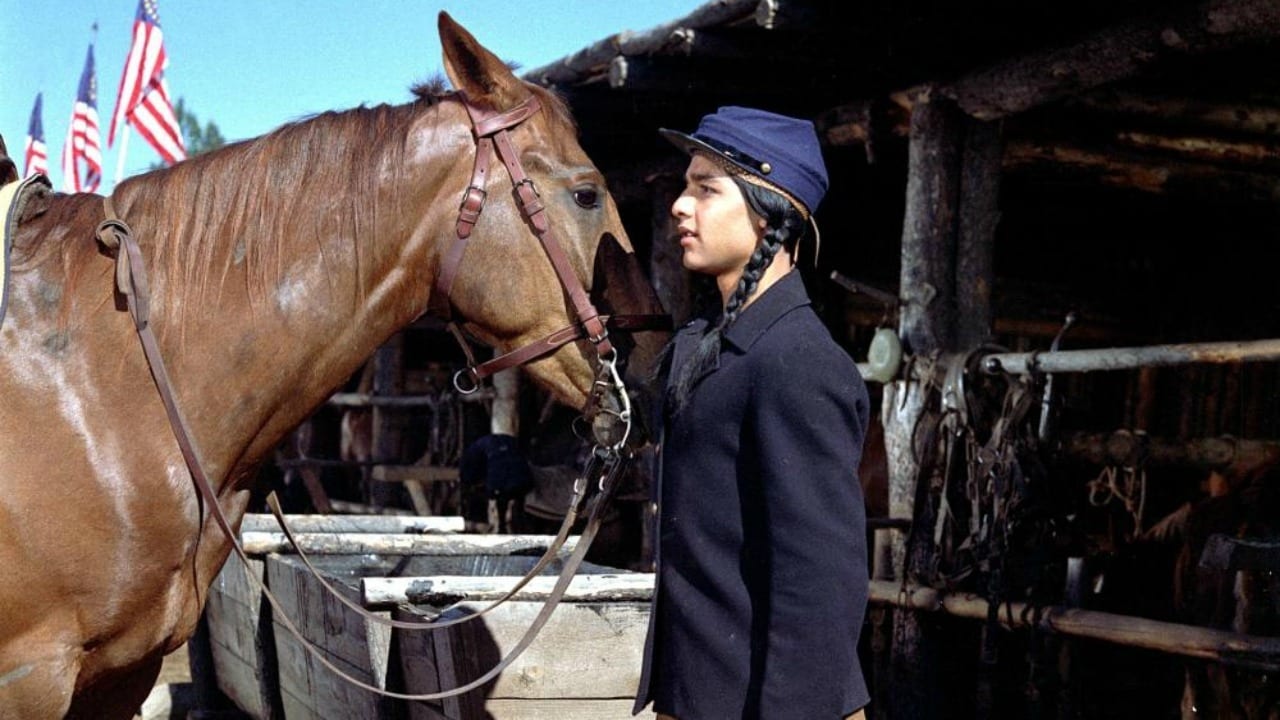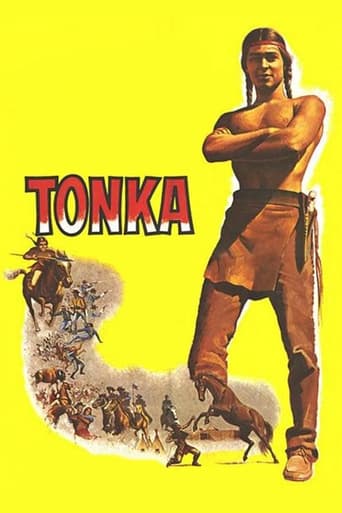




Let's be realistic.
It's funny watching the elements come together in this complicated scam. On one hand, the set-up isn't quite as complex as it seems, but there's an easy sense of fun in every exchange.
View MoreIt's hard to see any effort in the film. There's no comedy to speak of, no real drama and, worst of all.
View MoreAn old-fashioned movie made with new-fashioned finesse.
View MoreOriginally, this was to have been called "Comanche," the title of the novel it is based on. Just before the Disney company was about to release their latest western, though, a B oater starring Dana Andrews with that name hit theatres. That one dealt with Comanche Indians. This one, with Comanche, a horse owned by a member of the seventh cavalry that survived the Little Big Horn and led to the tradition of the riderless horse still in existence today. Disney changed the name to Tonka, which is what a young Sioux boy, White Bull (Sal Mineo) calls the horse after catching it - short for Tonka Wakon, or the Great One. The change of titles actually works to the film's benefit, for Disney and company placed more emphasis on the Indian side of the story than the cavalry's, making this the first movie ever made to tell the story of Custer's Last Stand from the Indian point of view, at least up to Little Big Man (1970) - and in truth that was from the point of view of a what man raised by the Indians. Mineo, who would again play an Indian youth in a much bigger film, John Ford's Cheyenne Autumn (1964), is believable, and the film is sympathetic to Native Americans, without being patronizing or condescending, in a way that we expect today, but which no Hollywood filmmaker but Disney did back in the fifties - he was P.C. before P.C. existed, and may just have created the climate of tolerance that we strive for today. Philip Carey plays the sympathetic cavalryman Miles Keogh, and it's worth noting that this was the first Disney western NOT to star Fess Parker, who had been their headliner since Davy Crockett four years earlier. Very accurate staging of the Little Big Horn battle, as this is one of the only films ever made to reveal that Custer (Britt Lomond, the villainous Monastario on Disney's ZORRO TV show) had his hair trimmed short just before the battle, and that he did not carry a sword to the battle - and neither did any of his men. Those who expect Disney films to be sanitized ought to catch this one, as the Last Stand is quite bloody considering the time period in which it was made, forcing child viewers to deal with the unromantic truth of warfare on the plains, circa 1876. A little gem worth rediscovering.
View MoreIt,s one of those Disney family movies from the fifties, that gives you a good feeling, like many others from the same cataloging. Disney was outstanding in those days. Nostalgia, of course, but they don't make them like this anymore. Tonka, was one of the frontier movies that went a bit deeper into the Indian nation, and also portrayed Custer as the mean man he was. One of the first times from Hollywood actually. At the same time told the story of the sole survivor from The Battle of Little Big Horn in 1876. Excellent photography, and Sal Mineo's part as White Bull and his companionship with Tonka, was indeed heartwarming. Disney ought to put this out on DVD, with historical bonus etc. Jørn Back, Norway
View MoreI saw this movie as a kid and loved it. I now own horses and watched it with my equestrian daughter recently. It still holds up pretty well, but the thing that blew my mind was that Tonka's natural blaze is apparently painted over and the color does not match. Look at the picture on the cover of the Disney release - It's amazing that they thought they would pull that off.I agree with the other person's comment about the subject matter for a Disney kid's film. Of course, the Custer last stand part is only the big final scene. Most of the movie deals with the young Indian brave and Tonka as they sort their way through the harsh realities of those times. It seems a bit of a stretch (but perfect ending for Disney) that in the end Sal becomes a scout for the army with Tonka as his horse.
View MoreA real wholesome movie, especially from the perspective of the American-Indian. If not mistaken, back when this was released it was meant to be a Sal Mineo vehicle. Mineo plays White Bull, a young boy coming to grips with becoming a man. Others of note in this scenic drama are Joy Page, Rafael Campos, Slim Pickens and John War Eagle. Doubtful you would watch this more than once.
View More